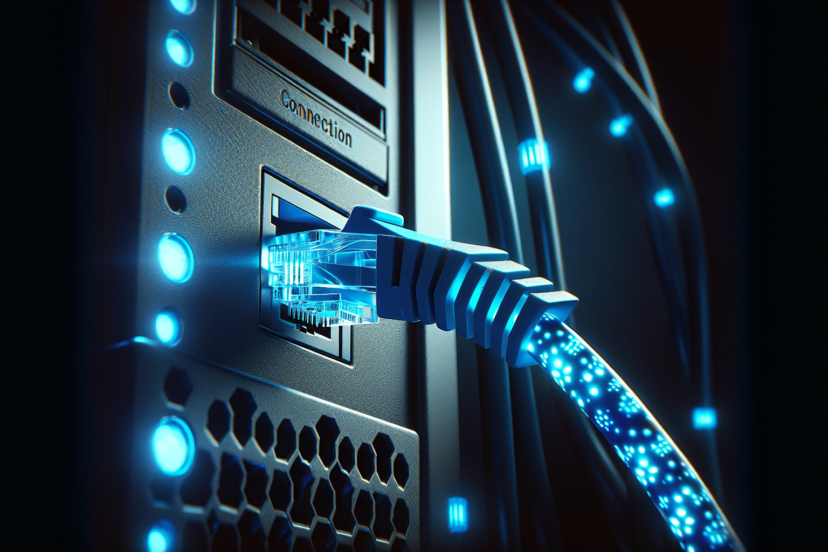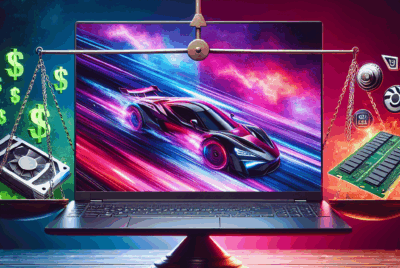How Can I Reduce Lag While Gaming Online?
Are you tired of experiencing frustrating lags while gaming online? Look no further! In this article, we will explore effective strategies and tips to help you minimize lag and enhance your online gaming experience. With our expert advice, you’ll be able to conquer your virtual battles with seamless gameplay and uninterrupted fun. Say goodbye to lag, and hello to optimal gaming performance!
Improving Internet Connection
When it comes to online gaming, a stable and fast internet connection is essential for a smooth gameplay experience. To improve your internet connection, there are several steps you can take.
Check your internet speed
Before diving into any optimizations, it’s crucial to know your current internet speed. You can easily check this by running an internet speed test on various websites available. This will give you an idea of your download and upload speeds, allowing you to identify any potential issues that need addressing.
Connect directly to the modem
When gaming, it’s recommended to connect your device directly to the modem via an Ethernet cable. This bypasses any potential signal interference caused by Wi-Fi and ensures a stable and reliable connection. Although Wi-Fi technology has improved over the years, a wired connection remains the best choice for minimizing lag during online gaming sessions.
Consider upgrading your internet plan
If you consistently experience slow internet speeds or frequent lag spikes, it may be worth considering upgrading your internet plan. Higher-tier plans often offer faster download and upload speeds, which can significantly improve your gaming experience. Contact your internet service provider to discuss available options and find a plan that suits your needs.
Reset your network equipment
Sometimes, network equipment like routers and modems can experience glitches or overload, affecting your internet connection. To address this, try resetting your network equipment by powering it off for a few minutes, then turning it back on. This simple step can often resolve any temporary issues and restore your connection to its optimal state.
Use an Ethernet cable instead of Wi-Fi
While Wi-Fi provides convenience, it can introduce latency due to signal interference from other devices or physical obstacles. If a wired connection is not feasible, try using a Wi-Fi extender or a powerline adapter to enhance Wi-Fi coverage and reduce latency. Additionally, positioning yourself closer to the Wi-Fi router can help improve signal strength and stability.
Optimizing System Performance
In addition to improving your internet connection, optimizing your system’s performance is crucial for reducing lag while gaming. Here are some steps to consider.
Close unnecessary background processes
When gaming, make sure to close any unnecessary background processes or applications running on your computer. These could consume valuable system resources and potentially lead to a degraded gaming performance. By freeing up system resources, you can allocate more power to your game, resulting in a smoother and more responsive gameplay experience.
Update your graphics drivers
Graphics drivers play a crucial role in your gaming experience, as they ensure optimal performance and compatibility with your graphics card. Outdated drivers can potentially introduce performance issues and graphical glitches. To avoid these problems, regularly update your graphics drivers by visiting the manufacturer’s website or using driver update software.
Free up disk space
Having insufficient disk space on your computer can impact its performance, leading to increased lag during gaming sessions. To free up disk space, consider removing unnecessary files, uninstalling unused applications, and using disk cleanup tools. This will help optimize your system’s performance and create more room for your games to run smoothly.
Adjust in-game settings
Most modern games offer a range of graphical settings that can be adjusted to match your system’s capabilities. Lowering graphics settings, such as texture quality, shadow resolution, and anti-aliasing, can significantly improve performance by reducing the strain on your graphics card. Experiment with different settings to find the right balance between visual quality and smooth gameplay.
Disable or limit bandwidth-consuming applications
While gaming, it’s important to minimize any bandwidth-consuming applications that may run in the background. Applications like file-sharing programs, streaming services, and automatic updates can put a strain on your internet connection and lead to increased latency. Close or limit these applications to ensure that your gaming traffic receives priority and sufficient bandwidth.
Reducing Network Interference
Network interference can disrupt your internet connection and introduce lag during gaming sessions. Here are some steps to reduce network interference and improve your overall gaming experience.
Move closer to the Wi-Fi router
If you’re using a Wi-Fi connection for gaming, consider positioning yourself closer to the Wi-Fi router to minimize signal interference. Physical obstacles such as walls, furniture, or other electronic devices can weaken the Wi-Fi signal, leading to increased latency. By moving closer to the router, you can improve signal strength and reduce the chances of network interference.
Minimize the number of connected devices
Having multiple devices connected to the same network can increase network congestion and potentially impact your gaming performance. To reduce network interference, consider disconnecting or limiting the use of devices that are not essential during your gaming sessions. This can help prioritize bandwidth for your gaming traffic and reduce the chances of lag spikes.
Use a 5GHz frequency band
Wi-Fi routers often operate on two frequency bands: 2.4GHz and 5GHz. The 2.4GHz band is more susceptible to interference from other devices, whereas the 5GHz band offers faster and more reliable connections. If your router supports it, connect to the 5GHz band for a more stable and less congested gaming experience.
Change Wi-Fi channels
If you’re experiencing significant Wi-Fi interference from other nearby networks, changing the Wi-Fi channel on your router can help mitigate the issue. Most modern routers allow you to change the channel in the router settings. Experiment with different channels to find the one that offers the least interference and provides the best possible gaming performance.
Reduce physical obstructions
Physical obstructions, such as walls, furniture, or even other electronic devices, can weaken and disrupt your Wi-Fi signal. To minimize interference, ensure that your Wi-Fi router is positioned in an open and elevated location, away from potential obstructions. This will help optimize signal strength and improve the overall stability of your Wi-Fi connection while gaming.
Managing Game Settings
Optimizing game settings is an essential step towards reducing lag and improving performance. Here’s what you can do to fine-tune your game settings for an optimal gaming experience.
Lower graphics settings
If you’re experiencing lag during gameplay, lowering graphics settings can be an effective solution. Many games allow you to adjust settings such as resolution, texture quality, and effects. By reducing the graphical load on your system, you can improve performance, reduce lag, and achieve smoother gameplay.
Disable vertical synchronization (V-Sync)
Vertical synchronization, or V-Sync, is a graphics setting that helps prevent screen tearing by synchronizing the game’s frame rate with the refresh rate of your monitor. However, enabling V-Sync can introduce input lag, negatively affecting your gaming experience. If you’re struggling with lag, try disabling V-Sync to reduce input delay and improve responsiveness.
Optimize the game’s network settings
Some games provide network-specific settings that allow you to optimize your connection for online play. Options like network smoothing, network quality, or packet loss prevention can help mitigate lag and improve overall network performance. Experiment with these settings to find the configuration that works best for your internet connection.
Reduce in-game latency options
Many games offer specific options to reduce latency and improve responsiveness. These options may include features like reducing mouse input delay, minimizing input buffering, or optimizing network latency compensation. Explore the game’s settings menu and enable these options to further optimize your gaming experience.
Close unnecessary game overlays
Certain game overlays, such as those provided by chat or streaming applications, can impact your system’s performance and introduce lag. If you’re experiencing performance issues, consider disabling or closing these overlays while gaming. This can help free up system resources and ensure a smoother gaming experience without unnecessary lag.
Using Gaming VPNs
Virtual Private Networks (VPNs) can provide additional benefits for online gaming, including improved security and reduced latency. Here’s how to make the most of VPNs for gaming.
Choose a VPN with low latency and high speeds
When selecting a VPN for gaming, prioritize providers that offer low latency and high-speed connections. Some VPNs are specifically optimized for gaming and offer servers in strategic locations to minimize latency. Look for providers that have a reputation for fast and reliable connections to ensure a seamless gaming experience.
Connect to a server closer to the game server
To minimize latency and reduce lag, connect to a VPN server that is closer to the game server location. By reducing the physical distance between your device, the VPN server, and the game server, you can potentially achieve lower ping times and smoother gameplay. Most VPN providers offer a range of server locations, allowing you to choose the one that best suits your needs.
Disable encryption for faster speeds
While encryption is essential for online security, it can sometimes introduce additional latency when gaming. If you’re primarily concerned with reducing lag and improving performance, consider disabling encryption on your VPN connection. This will prioritize speed over security, potentially resulting in faster connections and reduced gaming latency.
Use VPNs with dedicated gaming servers
Some VPN providers offer specialized servers optimized for gaming. These servers are specifically configured to minimize latency and provide a smoother gaming experience. If you’re a dedicated gamer, consider using VPNs that offer dedicated gaming servers to achieve the best possible performance.
Trial multiple VPN providers for the best performance
Not all VPN providers are created equal, and their performance can vary depending on a variety of factors. To find the VPN that provides the best gaming experience, consider trial periods or free versions of different VPN services. Experiment with different providers to determine which one offers the lowest latency, fastest speeds, and overall best performance for your specific gaming needs.
Managing Background Applications
Background applications can consume valuable system resources and impact gaming performance. Here’s how to effectively manage them for a smoother gaming experience.
Close bandwidth-heavy applications
Applications that use a significant amount of bandwidth, such as file-sharing programs or streaming services, can hog your internet connection and introduce lag during gaming sessions. Before launching your game, make sure to close or limit the use of these bandwidth-heavy applications. By doing so, you can prioritize your gaming traffic and ensure a smoother online experience.
Disable automatic software updates
Automatic software updates, including those for your operating system and other applications, can unexpectedly consume system resources and disrupt your gaming session. To prevent this, disable automatic software updates and manually update your software during periods when you’re not actively gaming. This will help avoid any interruptions or performance issues caused by background downloads.
Turn off cloud syncing services
Cloud syncing services, such as Dropbox or Google Drive, continuously upload and download files in the background. While useful for data backup, these services can consume bandwidth and impact your gaming performance. Temporarily disabling or scheduling synchronization during your gaming sessions can help reduce lag and ensure smoother gameplay.
Monitor and close resource-intensive processes
Some applications or processes running in the background can consume significant system resources, causing performance issues during gaming. Monitor your system’s resource usage using task manager or third-party monitoring tools, and identify any resource-intensive processes. Consider closing or disabling these processes temporarily while gaming to free up system resources and improve overall performance.
Optimize your computer’s power settings
Your computer’s power settings can impact its performance and energy consumption. By optimizing power settings for high performance, you can ensure that your system prioritizes gaming performance over power saving. Adjust power settings in your computer’s control panel or settings menu to maximize performance during gaming sessions.
Reducing Server Distance
The physical distance between your device and the game server can introduce latency and impact your gaming experience. Here are some ways to reduce server distance and improve performance.
Choose servers closest to your location
When selecting game servers, try to choose those closest to your physical location. The shorter the distance between your device and the server, the lower the latency and potential lag. Most games offer server selection options, allowing you to pick the server that offers the best connectivity and the lowest ping times.
Use game servers specifically optimized for your region
Many online games offer servers that are specifically optimized for different regions or geographic locations. These servers are often strategically located to minimize latency and provide the best possible gaming experience for players in that region. When available, choose game servers tailored for your region to reduce lag and improve overall performance.
Consider using a gaming proxy server
Gaming proxy servers can act as intermediaries between your device and the game server, optimizing your network connection and reducing latency. These proxy servers often have optimized routing and caching techniques to minimize the distance between you and the game server, resulting in improved performance. Research and explore gaming-specific proxy server solutions to enhance your gaming experience.
Avoid connecting to servers with high latency
While it’s tempting to join servers with a large player count or popular game modes, these servers can sometimes have higher latency due to increased traffic. To reduce lag and achieve a smoother gameplay experience, consider connecting to servers or game modes with lower player counts. This can help ensure a more stable and responsive connection for online gaming.
Opt for game servers with low player counts
Game servers with a lower player count generally experience less network congestion and offer better performance. If reduced latency and smoother gameplay are your priorities, consider choosing game servers with lower player populations. This can help create a more stable gaming environment and minimize the chances of experiencing lag or connection issues.
Monitoring Network Performance
Monitoring your network performance while gaming allows you to identify potential issues and take necessary steps to optimize your connection. Here’s what you can do to manage and analyze your network performance.
Use network monitoring tools
Network monitoring tools provide valuable insights into your network performance, such as latency, packet loss, and network stability. By using these tools, you can identify potential bottlenecks or issues that may be causing lag during your gaming sessions. There are various free and paid network monitoring tools available to help you monitor and analyze your network performance.
Check ping and latency
Ping and latency are key metrics that determine the responsiveness of your network connection. A high ping or latency can introduce lag and delays during online gaming. Use built-in tools or third-party software to check your ping and latency to the game servers you’re connecting to. If you notice consistently high ping or latency, consider implementing the aforementioned optimizations to reduce lag.
Identify packet loss issues
Packet loss refers to the loss or corruption of data packets during transmission. Even a small amount of packet loss can introduce stuttering, lag, or other issues during gaming. Network monitoring tools can help identify if you’re experiencing packet loss and provide insights into potential causes. Addressing packet loss issues may involve troubleshooting your internet connection, contacting your internet service provider, or exploring hardware optimizations.
Analyze network stability
Network stability is crucial during gaming to maintain a smooth and consistent connection. Network monitoring tools can help you analyze the stability of your network by monitoring factors such as ping fluctuations or variations in latency. By identifying any instability, you can take appropriate action to improve your network’s reliability and reduce the chances of lag during your gaming sessions.
Contact your internet service provider (ISP) if needed
If you’ve exhausted all other troubleshooting options and are still experiencing significant lag, it may be worth contacting your ISP for further assistance. Explain the issue you’re facing, provide any relevant data collected from network monitoring tools, and inquire if there are any known issues in your area. Your ISP may be able to offer additional guidance or perform diagnostics on your connection to identify potential causes of lag.
Upgrading Hardware
Sometimes, upgrading certain hardware components can significantly improve your gaming performance and reduce lag. Here are some hardware upgrades to consider.
Upgrade your computer’s RAM
Insufficient RAM can impact your system’s ability to handle demanding games, leading to increased lag and decreased overall performance. Consider upgrading your computer’s RAM to ensure there’s enough memory available for games to run smoothly. More RAM allows your system to handle larger data loads, reducing the chances of lag during intensive gaming sessions.
Invest in a faster processor
The processor, or CPU, is responsible for handling the instructions and calculations necessary for games to run. A faster processor can improve overall system performance and reduce lag by processing tasks more quickly. Consider upgrading to a faster CPU that is compatible with your motherboard to unlock the full potential of your gaming experience.
Upgrade your graphics card
The graphics card, or GPU, plays a crucial role in rendering graphics and visuals in games. Outdated or low-performing graphics cards can significantly impact gaming performance and introduce lag. Upgrading to a more powerful graphics card that meets the requirements of modern games can improve frame rates, reduce lag, and provide a more immersive gaming experience.
Get a solid-state drive (SSD)
Traditional hard disk drives (HDDs) can have slower read and write speeds compared to solid-state drives (SSDs). Upgrading to an SSD can significantly decrease loading times and improve overall system responsiveness during gaming. By storing your game files on an SSD, you’ll experience faster load times, reduced stuttering, and a smoother gameplay experience.
Use a gaming-specific router
Standard routers may not prioritize gaming traffic, leading to increased latency and potential lag. Gaming-specific routers are designed with features such as Quality of Service (QoS) and traffic shaping, allowing you to prioritize gaming traffic over other internet activities. Consider investing in a router specifically optimized for gaming to ensure low latency and a stable connection.
Optimizing Game and Router Settings
Fine-tuning game and router settings can further enhance your gaming experience and reduce lag. Here’s what you can do to optimize these settings.
Enable Quality of Service (QoS) on your router
Quality of Service (QoS) is a feature available on many routers that allows you to prioritize certain types of network traffic. By enabling QoS and configuring it to prioritize gaming traffic, you can ensure that your game packets are given higher priority, reducing the chances of lag caused by other internet activities.
Configure port forwarding for the game
Port forwarding allows incoming data packets from the game server to bypass certain network restrictions, improving the connection between your device and the game server. Consult the game’s documentation or online resources to find the specific ports that need to be forwarded. By properly configuring port forwarding on your router, you can potentially reduce lag and improve overall performance in online gaming.
Apply firmware updates to the router
Router manufacturers regularly release firmware updates that address security vulnerabilities, introduce new features, and fix bugs. Keep your router’s firmware up to date by regularly checking for updates through the manufacturer’s website or the router’s administration interface. This ensures that you’re utilizing the latest optimizations and bug fixes, potentially improving your gaming experience and reducing lag.
How Can I Reduce Lag While Gaming Online
Use a wired connection for better stability
Although Wi-Fi technology has improved, a wired connection still offers superior stability and reliability compared to wireless connections. Whenever possible, use an Ethernet cable to connect your gaming device directly to the router. This bypasses any potential interference or signal loss caused by Wi-Fi, resulting in a more stable and responsive gaming connection.
Enable hardware acceleration on the router
Hardware acceleration is a feature available on some routers that offloads certain network tasks from the router’s processor to specialized hardware. Enabling hardware acceleration can improve the router’s processing speed and reduce latency, resulting in a smoother gaming experience. Check your router’s settings or consult the manufacturer’s documentation to enable this feature if available.
By following these tips and optimizations, you can significantly reduce lag and improve your online gaming experience. Remember to regularly monitor your network performance, stay updated with the latest hardware and software upgrades, and prioritize a stable and fast internet connection for a seamless gaming experience. Happy gaming!




